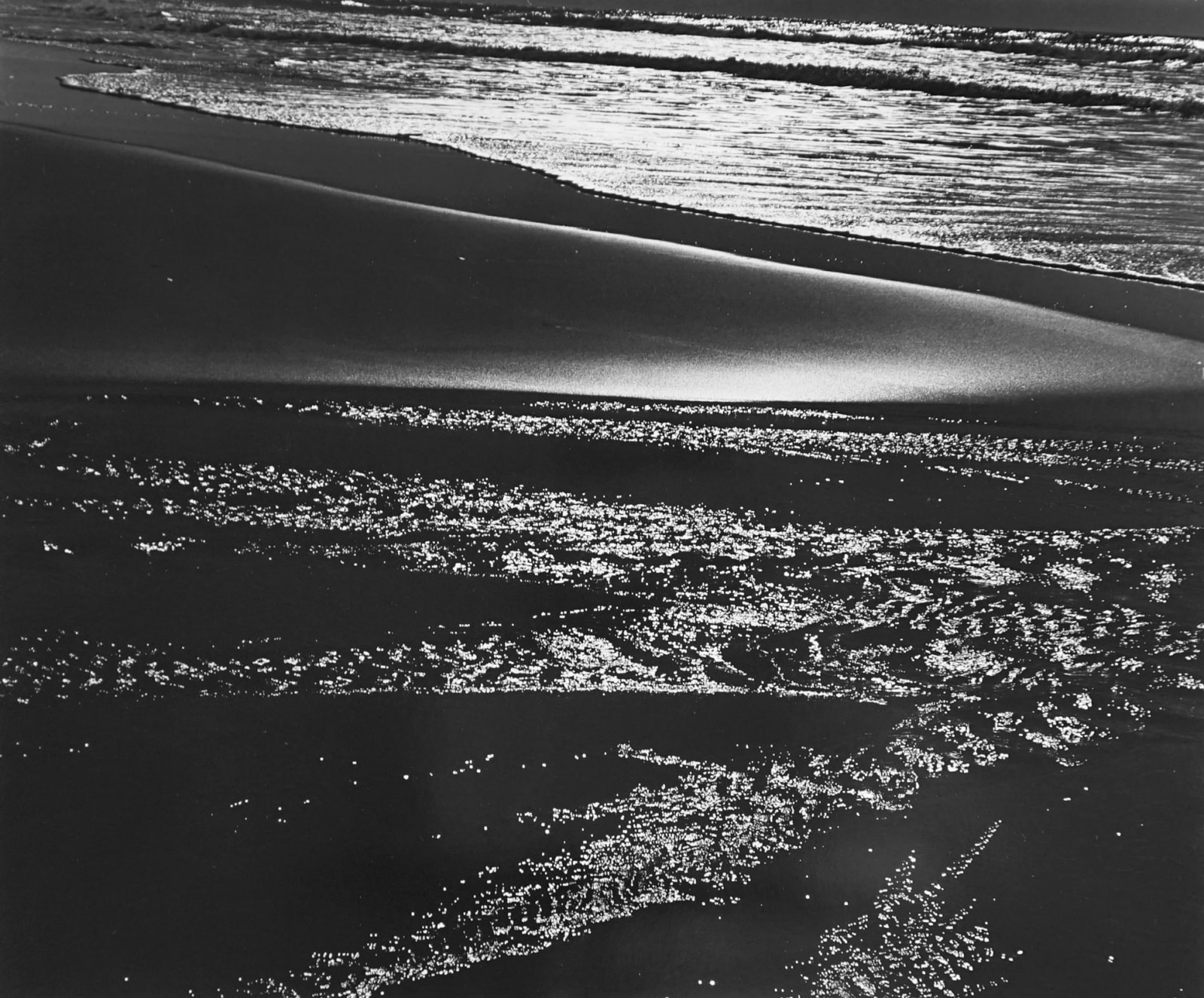


Brett Weston
Oregon Coast, c. 1984
Silver gelatin print mounted to museum board
Image: 15 1/4 x 18 3/8 inches
Mount: 22 x 25 inches
Mount: 22 x 25 inches
Signed in pencil on mount recto; annotations in pencil on mount verso
Further images
Brett Weston’s remarkable career in fine art photography spanned over seven decades. Brett, the son of famed photographer, Edward Weston, was taught the basics of photography by his father, working as his studio assistant in Mexico at the young age of fourteen. The aesthetic influences from his father as well as Tina Modotti, Frida Kahlo, and Diego Rivera, collided together to create his own innovative and modernist vision. At 17, he had his work included in “Film und Foto” (1929), a critical avant-garde exhibition held between the two World Wars. Through out his life, Weston traveled the world, transforming urban and natural landscapes, close-ups of organic and manmade materials, and nudes into elegant, abstract textures and patterns. Both Brett and his father were among the prestigious small group of California photographers in the 1930s, known as the Group f/64, which included Ansel Adams and Imogen Cunningham. They favored large-format view cameras, full-frontal images, and very literal and precise black-and-white prints with an emphasis on the formal qualities of the photograph.
Brett Weston’s photographs have been featured in hundreds of exhibitions around the world. It is included in the permanent collections of leading museums and galleries including the Getty Museum, San Francisco Museum of Modern Art, Art Institute of Chicago, George Eastman House, Metropolitan Museum of Art, Museum of Modern Art New York, Whitney Museum of American Art, Philadelphia Museum of Art, Oklahoma City Museum of Art, Amon Carter Museum, Museum of Fine Arts Houston, National Gallery of Art and the Smithsonian American Art Museum among others.
Print: Overall in good condition. Please note the colors and shades in the online catalogue illustration may vary depending on screen settings.
Provenance
Private Collection, Atlanta, GA;The artist late 1980s


